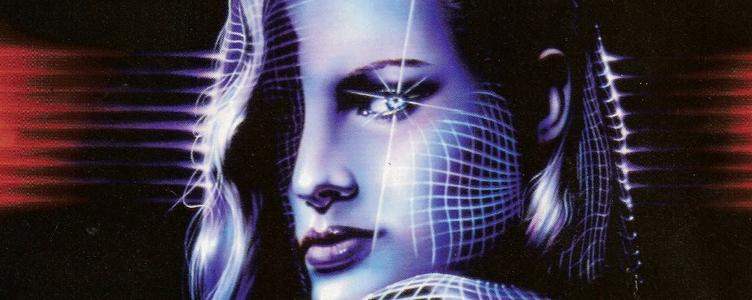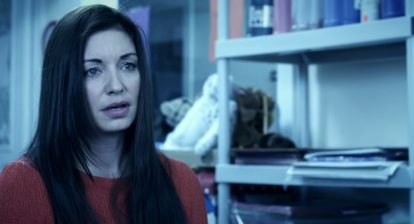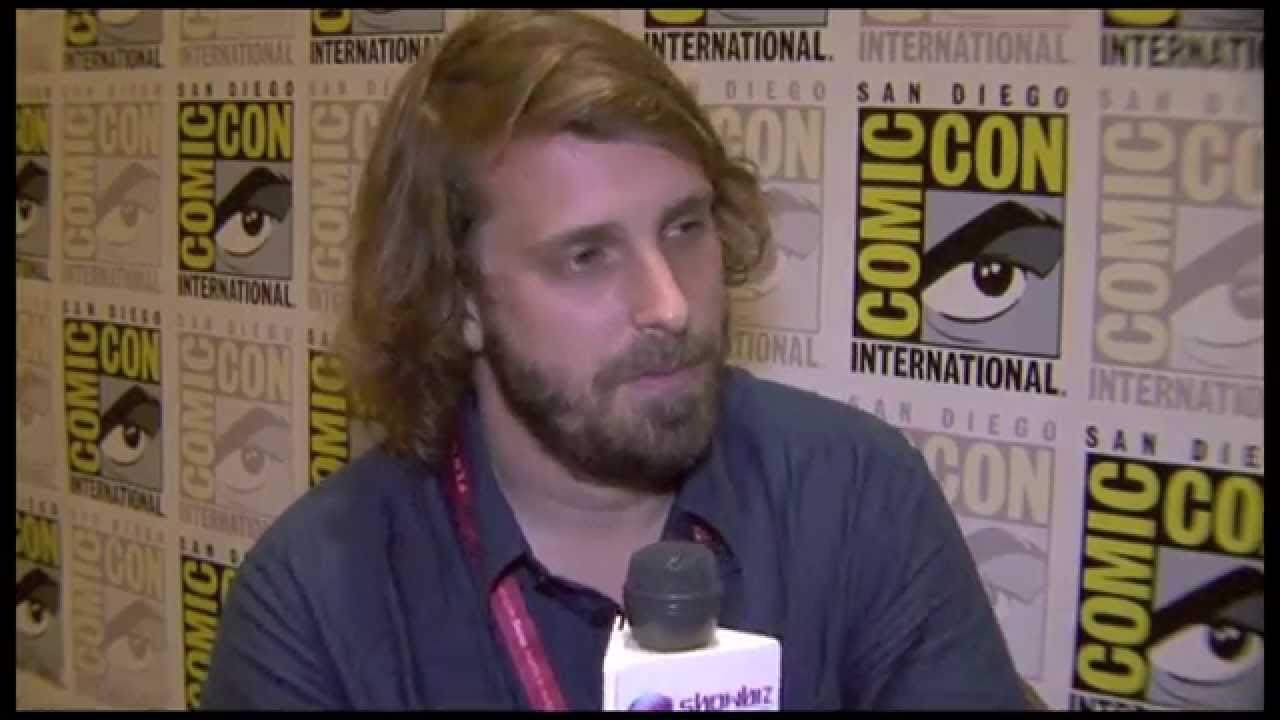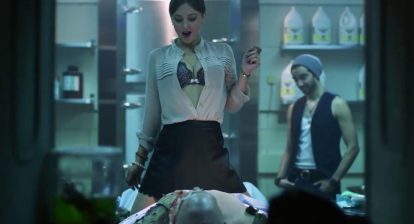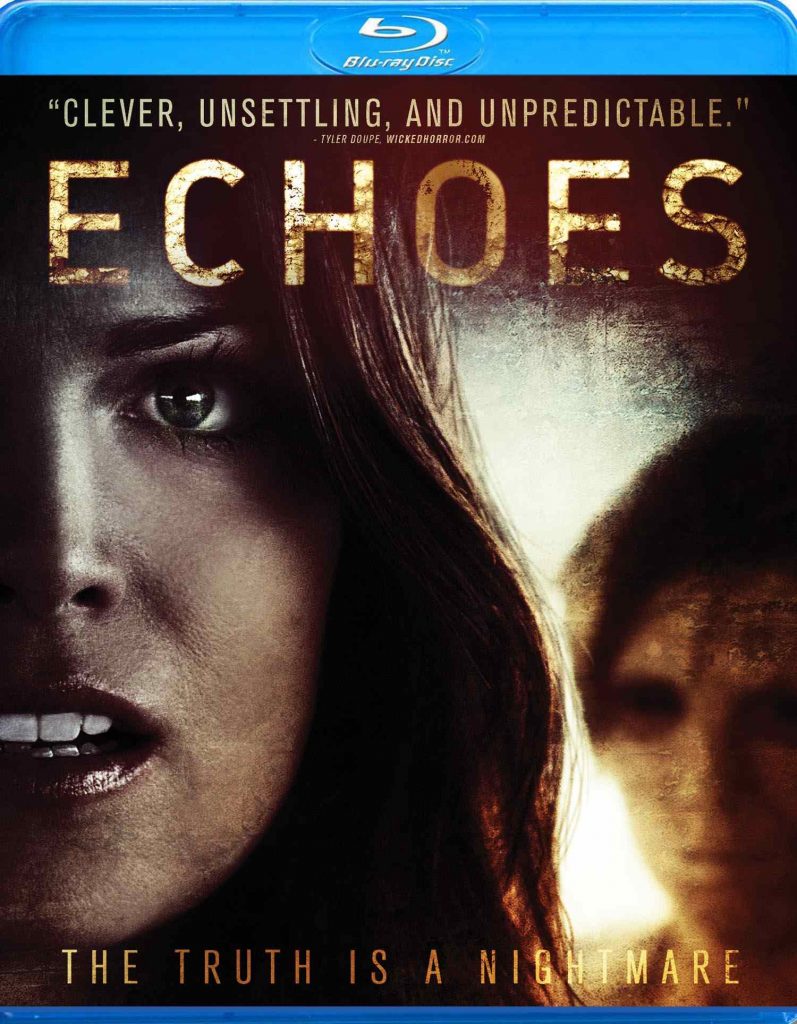Wicked Horror recently had the occasion to speak with up-and-coming French filmmaker Emilie Flory on her new project Trauma Dolls. She fills us in on working with 35 MM, her inspiration for the project, and what she has planned for the future.
Wicked Horror: Where did the original idea for Trauma Dolls come from?
Emilie Flory: Emilie FlorySince part of this subject has been extensively treated by Crashpalaceproductions, in Malevolent magazine and on UKHorrorScene, I won’t go back over the accident that almost got me killed and capped years in my life filled with rejections, nor my reconstruction with the usual after effects that follow this sort of mishap years later. I will talk more about the way the idea developed in my mind. Admittedly, the fact of having been run over and coming close to death was certainly what triggered me to tell this story, but I think that my real motivations for doing it were driven by a wider ranged artistic desire.
Trauma Dolls is unquestionably a particular project for me because, more than any other, it strikes a deep chord with the person I am. If one leaves out my six months of research on neurosciences, the writing of the screenplay almost seemed easy to me, that’s how necessary it had become: Trauma Dolls was a real release for me, a true catharsis. I was in a nearly hypnotic state throughout the writing stage, the screenplay’s structure came to me on its own and all the ideas, equations and putting together seemed to emerge naturally from my brain. And yet, Bijou’s life has nothing to do with mine. It’s the character’s own essence that is intimately connected to my nature, to my vision of the world and to my conviction that only love and spirituality can “save” us, set us free from our inner demons. Trauma Dolls talks about the battle we have to wage against ourselves continually to act “correctly” and to progress. The fact is that I became a lot more aware of things after my accident and that it was the right time for me to talk about the tragedy that we all experience as human beings: trying to make what is good in us live together with these multiple temptations that push us toward the easy way out, the suffering and what is negative… For we are truly capable of the best as well as the worst. That’s what is fascinating. I can tell you that I really let myself go when I had to take on the dark side of Bijou’s character to breathe life into it. This heroine that we consider at the beginning of the movie as being “what is the best in us”, suddenly becomes “what is the worst in us” and the problem is that she absolutely can’t go back… For her, it’s a no-win situation, she is now evil incarnate. She has lost her soul. Her awareness of good and love only exists through what she gets in return from those who love her: her mother and her sweetheart who is also her soul mate.
That’s what I really wanted to explore. This dark side that lies dormant in each one of us and has taken over forever here.
Wicked Horror: How has your experience making short films influenced your work on your first feature length film?
Emilie Flory: Things begin for me with writing: the first thing that comes to me is the subject, the story and the main characters. Telling an action-packed story with fleshed out characters in a few minutes is the impossible challenge in short films. Short films are terribly frustrating when you want to give top priority to the story. I submitted myself to this short film exercise with feature movies in mind from the get-go.
In fact, you can notice it in Process 5 since the movie focuses on a sequence revealing the battle plan of a group of hackers taking action within a much larger story we will never see. I deliberately conceived the movie this way. I also fought to obtain the esthetics of a feature film. I worked a year and a half to make a ten-minute film, which is only normal when you take into consideration all the stages you have to follow to obtain the same quality in a short film as in a feature film. The movie’s length doesn’t change anything. Plus, as we all know, short films are generally made with very little money. The crews often accept to work for nothing between two projects. You have to be there for them and not the other way around. You also have to reassure those who trust you and follow you. Calming the doubts and fears of the others is up to you. You have to be both a nanny and an orchestra leader. Both flexible and firm. Firm because it’s the work of a crew and the danger is seeing your vision wither and slip away from you as you go along even though it’s the very heart, reason and core around which everyone gravitates and grafts onto. You are the guarantee of your idea and you must, for the good of this ensemble work, fight constantly to bring this story you have in mind to successful fruition. Your best allies can become your enemies if you’re not careful. The short film teaches you to work in an economical way since people aren’t always available and your time is limited. On Process 5, I storyboarded the whole movie. We didn’t shoot very many takes and we only filmed what was absolutely necessary. I had no cover at all. In the end, we used everything we shot. Nothing was tossed out.
The short film is a good school; it convinces one that movies are an arduous and powerful human experience. Plus, it’s different with every new project since the crews and the stories change. If your vision and your tenacity at work are strong and if you are well prepared psychologically, you can handle it. You must have a certain mind-set, like the risks, the challenges and know how to surpass yourself. It’s no picnic. It’s life at its most paradoxical, most human and most absolute. It’s life in record time with all of its uncertainties, but blown way out of proportion! It can be exhausting. You understand why great filmmakers, those who give the most, those whom we admire and are true visionaries, aren’t those who make the most movies.
Wicked Horror: You have worked with 35MM in the past, will Trauma Dolls be done in 35MM as well?
Emilie Flory: I’d really like to, unfortunately that won’t be up to me. The immediate cost of film acts as a break. Overall, shooting with film doesn’t cost anymore than shooting digital, except the industry has changed: Distribution and producing systems are no longer the same! I certainly won’t have the possibility to choose the medium I prefer for my first feature movie.
I regret it because if the economy evolves toward recycling and the preservation of resources, we might realize in a few years that the cost of digital in terms of energy consumed is excessive. We will also see that digital isn’t an optimum medium regarding the conservation of data (the big laboratories that digitalize are definite about this, the best conservation for movies remains film)… Because for the rest, with regard to movies’ visual quality, image depth, everyone agrees that film is unbeatable. It’s an organic medium, that’s why our eye and our brain are more receptive viewing a movie shot on film.
I’m going to tell you a little story because even I had forgotten the feeling you get from watching a movie shown in 35mm. Discovering in December that an optical print of William Friedkin’s Cruising was going to be screened at the Forum des Images in Paris, I had decided to write an article about the movie; knowing that, @RealJillyG of crimsonquintessence.com, which supports several artists on Twitter, had questioned me to find out the difference that exists between this type of screening and a digital screening… Of course, I’m talking to you about a movie by William Friedkin, a genius of the seventh art whose vision and directing have no weaknesses whatsoever… Well, the impression I had of being immersed in the movie, the feeling of reality that I perceived, a feeling increased tenfold thanks to the film medium that intensified the depth of field, all of that was a thousand times much stronger than in any 3D movie that’s supposed to thrust us into the image. It was a flesh and blood show.
There’s what you lose with digital, so sleek, so “perfect” and so not alive! Art doesn’t come out of this as a winner. It’s like a picture painted with acrylic paint; some are very beautiful and personally I get pleasure out of using this material when I paint, but when I use oil paint it’s a whole different story, I get much more mileage out of my work and my happiness. Besides, like film, an oil painting will keep while a picture painted with acrylic paint won’t.
Wicked Horror: When do you expect to commence production on the project?
Emilie Flory: Trauma Dolls is a low-budget movie; as soon as we manage to find the necessary funding to get things rolling, as soon as we find a producer, we’ll shoot. Icone Label Pictures is a collective of creators, a label: We’re not producers. We have the crews, the connections and we know the people who rent cameras, lighting, etc. We have what we need outside of casting directors. Without money and without a producer, we can’t cast the movie. The casting still remains to be done, whether it’s for Bijou’s character, for her mother’s (a neuroscience researcher), or for the characters of the surgeon and the photographer sweetheart, but also for the dancers and the rival models’ characters. All the info concerning the project is on our blog www.iconelabelpictures.com, and you will find a great report by Billy Crash explaining why Trauma Dolls is a movie that must be made. We have put together a complete press kit with the budget, etc. that explains all of that. Producers interested in the project can get it by contacting us, for example via Twitter by tweeting us or sending a DM to @EmilieFlory.
Wicked Horror: What’s up next for you after Trauma Dolls?
Emilie Flory: I have different projects in mind, in particular a B movie I wrote called Golden Bodies, which takes place in the world of online TV channels and in fitness and beauty circles. It talks about compromise, the thirst for power, sex and murders.
I also have another project being written that’s close to my heart. A science fiction movie project, I already have a first treatment but I need to do more research for it in order to decomplexify the world it’s in with the intention of making it accessible in terms of financial costs. The movie’s main theme is the quest for absolute love and freedom. The questions of power and appearance are dominant. It’s a dark and violent project.
I’m also open to outside propositions whether it’s for TV or even the Web. I had some work from these media recently.
I thank you so very much for giving me the opportunity to express myself on all these points. It’s great for the project and I’m very grateful to you. It was a real pleasure for me to answer all your questions.
English translation by Cameron Watson
